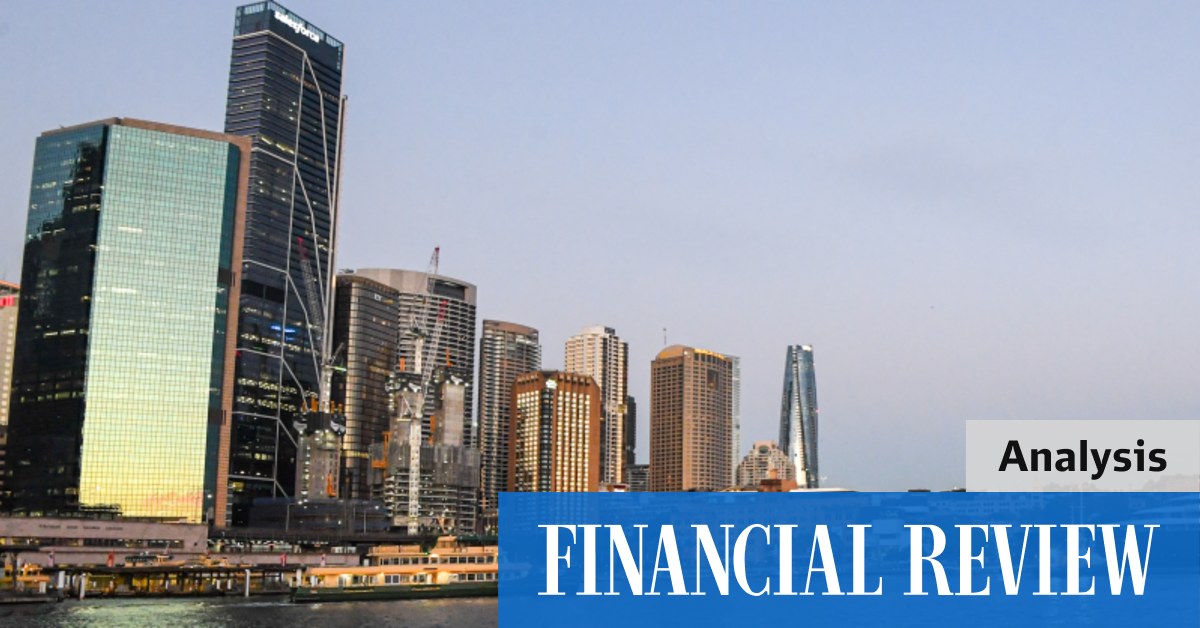Housing affordability: “Why Australia’s property crisis has gone global

- by Admin
- May 6, 2024

Skills shortages across much of the developed world mean more, not fewer, workers are needed. Indeed, the US jobs market and economy are running hotter than many thought possible as an influx of people across the southern border expands the labour pool – even as immigration shapes up as a defining issue in the November presidential election.
While the US has seen a widely covered surge in authorised and irregular migration, the scale of the increase actually pales in comparison to Canada’s growth rate. For every 1000 residents, the northern nation brought in 32 people last year, compared with fewer than 10 in the US.
Put another way: Over the past two years, 2.4 million people arrived in Canada, more than New Mexico’s population, yet Canada barely added enough housing for the residents of Albuquerque.
Canada’s experience shows there’s a limit to immigration-fuelled growth: Once new arrivals exceed a country’s capacity to absorb them, standards of living decline even if top-line numbers are inflated.
The Bank of Nova Scotia estimates a productivity-neutral rate of population growth is less than a third of what Canada saw last year, which would be more in line with the US pace.
So even as that record population growth keeps Canada’s GDP growing, life is getting tougher, especially for younger generations and for immigrants such as 29-year-old Akanksha Biswas.
Biswas arrived in Canada in the middle of 2022, just as per-capita GDP started plunging amid the start of the post-pandemic immigration boom and the Bank of Canada’s aggressive interest rate tightening cycle.
The former Sydneysider moved to Toronto for what she believed would be a better life with a lower cost of living and greater career prospects. Instead, she faced higher rent, lower pay and limited job opportunities.
“I actually had a completely different picture in my mind about what life would be like in Toronto,” said Biswas, who works in advertising. “Prices were almost similar, but there’s a lot more competition in the job market.”
Canada’s working-age population grew by a million over the past year but the labour market only created 324,000 jobs. The upshot? The unemployment rate rose by more than a full percentage point, with young people and newcomers again the worst hit.
Biswas spends more than a third of her income on the monthly rent bill of $C2800 ($3000), splitting the cost with her partner. She’s dining out less and making coffee at home instead of going to the cafe. She’s also pushing back plans to have children or buy a home.
“I don’t see my future here if I want to raise a family,” she says.
While millions of Americans also face a housing affordability crisis, their real disposable income growth has stayed above the rise in home prices over much of the past two decades. Not so in Canada. The median price for homes in Toronto is now $C1.3 million, nearly three times that of Chicago, a comparable US city.
The chronic under-building of homes and decades of continuous rises in prices has drained funds from other parts of the economy toward housing. That lack of investment in capital – combined with firms’ focusing instead on expanding workforces due to cheaper labour costs – has driven down productivity, which the Bank of Canada says is at “emergency” levels.
Staked lots in front of newly-built homes in Markham, Ontario. Bloomberg
Growing anxiety around the housing crunch forced Prime Minister Justin Trudeau’s government to scale back on its immigration ambitions, halting the increase of permanent resident targets and putting a limit on the growth of temporary residents for the first time.
Canada’s goal is now to cut the population of temporary foreign workers, international students and asylum claimants by 20 per cent, or roughly by half a million people, over the next three years. That’s expected to slash the annual population growth rate by more than half to an average of 1 per cent in 2025 and 2026.
Australia’s strains
Meantime, Biswas and her partner are calling it quits on their Canada experiment and moving to Melbourne, where they reckon they can afford a two-bedroom apartment for less than what they paid for a one-bedroom space in Toronto.
But life won’t be easy Down Under either as many of the same strains are playing out, with Australia facing its worst housing crisis in living memory.
Building permits for apartments and townhouses are near a 12-year low and there remains a sizable backlog of construction work, largely due to a lack of skilled workers. The government has tried to plug the labour supply gap by boosting the number of migrants, only to find that’s making the problem even worse.
Just like Canada’s experience, the ballooning population is not only exacerbating housing demand, it’s also masking the underlying weakness in the economy.
GDP has expanded every quarter since a short COVID-induced recession in 2020, yet on a per-capita basis, GDP contracted for a third consecutive quarter in the final three months of 2023 – the deepest decline since the early 1990s economic slump.
In absolute terms, Australia’s per-capita GDP is now at a two-year low – a “material under-performance” versus the US and an outcome that could spur higher unemployment, according to Goldman Sachs.
Angst about the lack of housing, soaring rents and surging home prices has prompted Anthony Albanese’s Labor government to crack down on student visas.
“It has been proven over many, many years that there’s a positive to Australia from a high migration intake,” said Stephen Halmarick, chief economist at Commonwealth Bank of Australia.
“But in the very near term, you can see that it’s putting upward pressure on rents, house prices and clearly that’s a concern for many and the demand for some services is seeing sticky inflation.”
Neighbouring New Zealand is grappling with a similar headache.
The government there last month made immediate changes to an employment visa program, introducing an English-language requirement and reducing the maximum continuous stay for a range of lower-skilled roles, citing “unsustainable” net migration.
Over in Europe, its largest economy, Germany, also saw a per-capita recession that comes against a backdrop of rising political tensions over a large number of asylum seekers, housing shortages and a misfiring economy. Bloomberg Economics analysis shows that France, Austria and Sweden are also among those who have suffered per-capita recessions.
In Britain, too, record levels of migration have begun to weigh on the economy. A technical recession in the second half of last year saw headline GDP slip 0.4 per cent, yet the slump was longer and deeper when adjusted for population.
If we hadn’t had such high immigration, housing would be cheaper than it is at the moment, possibly quite significantly.
— Paul Johnson, director of the Institute for Fiscal Studies
Per-capita GDP has contracted 1.7 per cent since the start of 2022, falling in six out of the seven quarters and stagnating in the other.
With Britain close to full employment and over 850,000 dropping out of its workforce since the pandemic, immigration has helped employers fill widespread worker shortages, not least in the health and social care sectors.
“A very good bit of the growth that we saw through the 2010s was down to net migration,” said Paul Johnson, director of the Institute for Fiscal Studies. “In terms of the overall size of the economy, it’s been really important. What’s really hard to say is what impact the net immigration has had on the per-capita numbers.”
UK GDP has expanded 23 per cent since the start of 2010. On a per-person basis, growth in output has been far less impressive at 12 per cent.
Over the same period, the population has surged, growing an estimated 11 per cent, or almost 7 million, to 69 million. The Office for National Statistics expects it to hit close to 74 million in 2036 in updated population projections that now predict faster growth. Over 90 per cent of the increase in the population expected between 2021 and 2036 will come from migrants, it said in January.
“If we hadn’t had such high immigration, housing would be cheaper than it is at the moment, possibly quite significantly,” Johnson said. “But the converse of that is that the problem has been that we simply haven’t built enough houses, given what we know is happening to the size of the population.”
The UK’s post-Brexit immigration system aimed to stop cheap labour from Europe and prioritise high-skilled workers. However, the government allows some foreign workers easier access if they are in shortage-hit sectors.
“Those shortages really are pretty much always caused by poor paying conditions, although the employers will tell you it’s all skills,” said Alan Manning, labour market economist at the London School of Economics.
“Then they start complaining about ‘we can’t afford higher wages and so we have to have migrants so we can keep our existing wages’.”
The growing pressures on housing and stretched public services are prompting a backlash among voters against Rishi Sunak’s ruling Conservative government ahead of a general election expected later this year.
It has haemorrhaged support to the right-wing populist Reform UK party, which is promising “net zero immigration,” while the Tories are polling in single digits among 18- to 24-year-olds who put housing as their second-most important issue.
The opposition Labour party has promised a “blitz” of planning reforms to unlock construction, as well as restraint on immigration as it heads toward what’s widely anticipated to be a sweeping election victory.
A shortage of properties for the bigger population has sent house prices to over eight times average earnings in England and Wales, and 12 times in London.
In 1997, they were 3.5 times earnings and four times, respectively. A lack of supply has also caused rental costs to rocket at a record pace in the last 12 months, worsening a cost-of-living crisis for young Britons especially.
The longer voters in the UK, Australia, Canada and similar economies see their living standards go backwards, the more their opposition to rapid immigration programs will harden. A lasting fix requires government policies, especially in housing, that convince both would-be migrants and the existing populations of the benefits of immigration-led economic growth.
Bloomberg
The Latest News
-
December 23, 2024Here’s why Golf Twitter lost its damn mind over Team Langer’s PNC victory – Australian Golf Digest
-
December 23, 2024Social Media Ban in Australia: What Online Casinos Can Learn on Responsible Gambling Practices? – Insights from CasinoAus
-
December 23, 2024From smaller homes to screen time, backyard cricket is facing challenges in modern Australia
-
December 23, 2024This quiet Canadian will make you love YouTube golf again – Australian Golf Digest
-
December 23, 2024Guide Helps Australian Workers Expose Tech Wrongdoings




